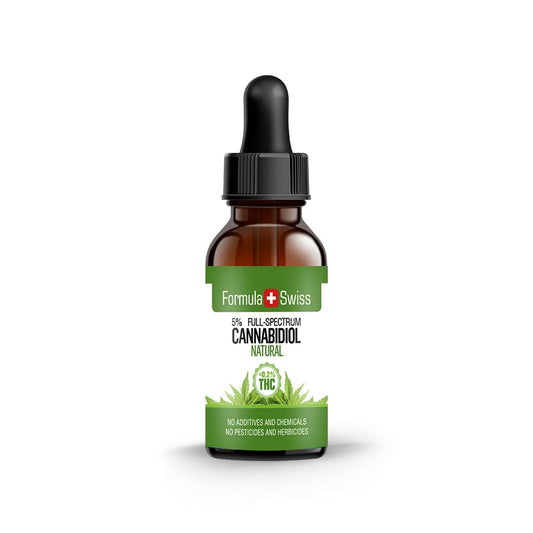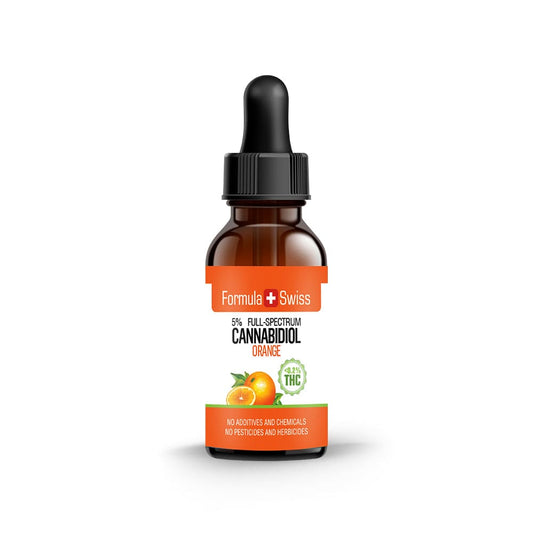Throughout my career, I have explored various compounds found within the cannabis plant, and today, I turn my attention to one that has recently sparked considerable curiosity—hexahydrocannabinol, or HHC.
As someone who has dedicated over a decade to the research, cultivation, and production of hemp-derived materials, I have observed the steady evolution of cannabinoids and their role in scientific investigation and regulatory discourse.
HHC, also known as hexahydrocannabinol, is a hydrogenated derivative of tetrahydrocannabinol (THC). It is a naturally occurring phytocannabinoid that has occasionally been identified in Cannabis sativa, though it is more often synthesised. Reports describe HHC as a psychoactive substance with similarities to THC in its potential effects.
According to the European Union Drugs Agency (EUDA), HHC has gained visibility since the early 2020s, particularly in online marketplaces and specialised retailers offering it as a substitute for other cannabinoids.
Prefer watching over reading? This video covers the key points from the article:
Save up to 30% when you order your CBD oil today
Key takeaways
- HHC, or hexahydrocannabinol, is derived from THC through hydrogenation.
- It is reported to produce psychoactive effects similar to those of THC.
- HHC is rarely found in cannabis plants in its natural form and is usually synthesised.
- Ongoing research is needed to better understand its properties and associated risks.
This article is provided for informational purposes only and does not relate to any of the products available in our webshop. For more information, please see our full disclaimer.
Chemical and physical data of HHC
HHC, or hexahydrocannabinol, possesses distinct chemical and physical properties. A closer look at its formula and structure provides key details relevant to laboratory and regulatory assessment.
The chemical formula of HHC is C21H32O2. Its structural formula—(6aR,10aR)-6,6,9-trimethyl-3-pentyl-6a,7,8,9,10,10a-hexahydrobenzo[c]chromen-1-ol—shows how hydrogenation alters the standard THC molecule.

This hydrogenation changes the cyclohexyl ring found in THC, resulting in a more stable molecule with altered binding characteristics.
| Chemical formula | Structure | Molecular mass (g·mol−1) |
|---|---|---|
| C21H32O2 | (6aR,10aR)-6,6,9-trimethyl-3-pentyl-6a,7,8,9,10,10a-hexahydrobenzo[c]chromen-1-ol | 316.485 |
This molecular data aids researchers in identifying, testing, and comparing HHC’s behaviour in analytical and experimental contexts. Additional study is necessary to explore how HHC may function across different settings and applications.
Synthesis of HHC
HHC can be synthesised from cannabidiol (CBD) through a series of chemical reactions. It is commonly produced in laboratory environments under controlled conditions, as it occurs only in trace amounts naturally.
Synthetic methods for HHC synthesis
- Benzene ring reduction method: This process converts CBD into HHC by reducing the aromatic ring system through hydrogenation steps.
- Cyclohexanol approach: An alternative method where CBD is first transformed into a cyclohexanol intermediate and then processed into HHC.
- Spectroscopic techniques: Techniques such as nuclear magnetic resonance (NMR) and mass spectrometry confirm the identity and purity of the final compound.
Synthetic methods are under constant review as new pathways are explored and existing ones are optimised. These approaches aim to create reproducible and high-purity outputs suitable for analytical purposes.
It is critical that synthesis is performed only in qualified laboratory settings by professionals. The manufacturing and handling of HHC is subject to national and EU-level controls and must comply with applicable safety and legal standards.
| Synthesis method | Advantages | Disadvantages |
|---|---|---|
| Benzene ring reduction | More direct conversion method | Involves sensitive or hazardous reagents |
| Cyclohexanol approach | Alternative route for specific use cases | Greater synthesis complexity due to intermediate formation |
| Spectroscopic techniques | Assures structural accuracy and purity | Requires costly and specialised equipment |
Order and enjoy up to 30% off your CBD oil purchase
Effects and risks linked to HHC
HHC is a cannabinoid that has been noted for producing effects similar to those associated with THC. However, scientific research into how it works in humans is still in its early stages.
A survey-based study published in Cannabis and Cannabinoid Research shared that participants described sensations such as mood shifts and a sense of relaxation. It’s worth noting that these insights are anecdotal and not backed by controlled clinical studies.
The full scope of potential risks and long-term effects of HHC remains uncertain. Some individuals have mentioned experiencing unpleasant reactions or challenges in moderating their use. These reflections are based on personal accounts and have not been verified through structured research.

Side effects reported so far include dizziness, stomach discomfort, and mood changes. However, how often these occur and to what extent is still unclear due to the lack of broad scientific data.
Another point of consideration is that synthetic HHC can differ in its makeup depending on how it’s produced. This may lead to variations in quality or the presence of unintended substances.
Overall, there is limited knowledge regarding any possible effects linked to long-term or repeated exposure to HHC. Ongoing research is essential to better understand its profile and impact.
Known effects and risks of HHC use
| Reported effects | Potential risks |
|---|---|
| Psychoactive effects resembling THC | Dizziness, gastrointestinal discomfort |
| Anecdotal similarity to cannabis-related experiences | Variability in product composition |
| Short-term user feedback only | Unknown long-term impact |
Due to the emerging nature of HHC-related data, individuals should approach use with caution and rely on current regulatory updates and professional guidance for informed decisions.
Potential dangers of HHC use
There are several risks associated with HHC that warrant caution. Habitual exposure to HHC and other cannabinoids may contribute to behavioural patterns that raise concern, particularly among younger individuals. Prolonged and frequent use could negatively impact cognitive and emotional balance.
In addition to these concerns, using HHC during pregnancy may pose additional risks. As the effects on prenatal development have not been well studied, precaution is strongly advised for those who are pregnant or planning pregnancy.

Psychosocial impacts such as reduced motivation and impaired focus have also been associated with frequent HHC use. These issues may influence work performance, relationships, and emotional well-being.
| Concern | Description |
|---|---|
| Potential behavioural dependence | Frequent exposure may lead to recurring use patterns requiring further study. |
| Lung irritation risk | Vapour inhalation may carry respiratory risks, particularly when quality is not verified. |
| Pregnancy-related risks | Insufficient data on developmental outcomes; use during pregnancy is not advised. |
| Impact on focus and relationships | Frequent use may interfere with personal and professional responsibilities. |
HHC products and availability
HHC materials are now available in a variety of forms. These products are often described as alternatives to higher-THC cannabinoid options, appealing to users interested in different cannabinoid profiles.

These products can be found through e-commerce platforms, vape shops, and select retail locations. Their growing availability underscores the importance of quality assurance and regulatory compliance.
The wide range of HHC formats includes:
- HHC vape cartridges: Cartridges containing HHC extract, used with compatible devices.
- HHC-formulated products: Items infused with HHC for topical or other non-ingestive applications.
- Low-THC botanical materials: Products with minimal THC content alongside HHC, offering varied cannabinoid profiles.
The landscape of HHC availability is dynamic, with new products regularly entering the market. Understanding composition, origin, and manufacturing standards is key to evaluating safety and reliability.
It is advisable to consult reliable sources or professionals when considering use, particularly in the context of legislation and scientific findings related to cannabinoids such as HHC.
| Product | Description | Advantages |
|---|---|---|
| HHC vape cartridges | Contains HHC extract and can be used with compatible vape pens or devices |
|
| HHC formulations | HHC-formulated items in forms such as confections or topicals |
|
| HHC extracts | Multi-use HHC extracts suited for diverse applications |
|
| Low-THC cannabis materials | Products combining minimal THC content with HHC for varied profiles |
|
As interest in HHC continues to increase, it is vital to stay informed and make responsible decisions. Monitoring changes in legal frameworks and industry quality standards is key to maintaining safety and compliance.
Order CBD oil now and save as much as 30%
Emerging research and monitoring of HHC
Research on HHC is still in its early stages, with ongoing studies aimed at gaining a clearer understanding of its characteristics, interactions, and potential implications.
The European Monitoring Centre for Drugs and Drug Addiction (EMCDDA) has been tracking HHC through its EU Early Warning System (EWS) since October 2022. This system gathers data to assess any potential social or health concerns associated with newly identified compounds such as HHC.
HHC is relatively new to regulatory attention, and continued research is essential for understanding how it interacts with biological systems. Monitoring efforts by the EMCDDA help provide a framework for tracking trends and identifying potential public safety issues.
These ongoing assessments support more informed decisions by policymakers and public health organisations. They also help to detect shifts in the market and user patterns, enabling timely response measures where needed.

As more data becomes available, stakeholders such as regulators, health authorities, and industry participants will be better equipped to understand HHC’s place within the broader cannabinoid research field.
Personal perspective
My work in CBD and hemp production has provided insight into both established and newer compounds. Exploring hexahydrocannabinol (HHC) has been an opportunity to learn more about a cannabinoid that is receiving increased attention in recent years.
Although CBD and THC remain widely discussed, HHC stands apart due to its unique chemical profile and production methods. It presents a relevant case for those seeking to understand lesser-known cannabinoids and how they are approached in science and regulation.
This article aims to share accurate, balanced information on HHC’s origin, synthesis, and observed characteristics to support a well-rounded understanding of the topic.
My motivation for discussing compounds like HHC is rooted in a commitment to responsible communication and transparency. Understanding these elements is vital for those engaged in research or production within this evolving field.
Don’t miss out—save up to 30% when you purchase CBD oil today
Frequently asked questions
What is HHC (Hexahydrocannabinol)?
HHC is a hydrogenated derivative of THC. It contains added hydrogen atoms that alter the structure and make it more stable under heat and light.
Is HHC found naturally in cannabis plants?
HHC is present in trace amounts in cannabis, typically in pollen and seeds. Most HHC used in products is synthesised through hydrogenation.
How is HHC different from THC?
The main difference lies in stability. HHC is less prone to oxidation due to its saturated molecular bonds, whereas THC degrades more quickly in light or air.
Is HHC psychoactive?
HHC is reported to interact with cannabinoid receptors in a manner similar to THC, although its effects may differ in intensity and duration.
What methods are used to produce HHC?
Hydrogenation is the most common method, involving the addition of hydrogen atoms to THC in the presence of a catalyst, such as palladium.
Can HHC be detected in drug tests?
There is currently no definitive data regarding how standard drug tests respond to HHC or its metabolites. More research is needed to clarify this point.
What forms of HHC products are available?
HHC is typically found in formats such as vape cartridges and concentrates. These are intended for specific application methods, not oral use.
How does HHC compare to other cannabinoids like delta-8 or delta-10 THC?
HHC differs chemically due to its hydrogenation. It may share some psychoactive traits with delta-8 and delta-10 THC, but its effects are distinct due to its structure.
Is HHC a synthetic cannabinoid?
HHC is considered semi-synthetic because, although it exists naturally in minimal quantities, commercial versions are produced through laboratory processes.
Which cannabinoids produce a psychoactive effect?






